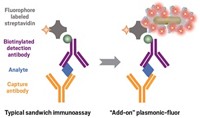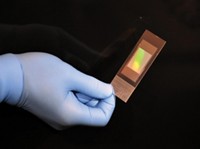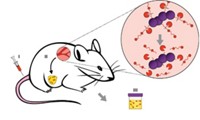Advertisement
Grab your lab coat. Let's get started
Welcome!
Welcome!
Create an account below to get 6 C&EN articles per month, receive newsletters and more - all free.
It seems this is your first time logging in online. Please enter the following information to continue.
As an ACS member you automatically get access to this site. All we need is few more details to create your reading experience.
Not you? Sign in with a different account.
Not you? Sign in with a different account.
ERROR 1
ERROR 1
ERROR 2
ERROR 2
ERROR 2
ERROR 2
ERROR 2
Password and Confirm password must match.
If you have an ACS member number, please enter it here so we can link this account to your membership. (optional)
ERROR 2
ACS values your privacy. By submitting your information, you are gaining access to C&EN and subscribing to our weekly newsletter. We use the information you provide to make your reading experience better, and we will never sell your data to third party members.
Analytical Chemistry
Gold Nanosensor Signals Sheep Fertility
Agricultural Science: Peptide-conjugated nanosensor could help ranchers spot surge in sheep hormone
by Deirdre Lockwood
October 3, 2012

When ranchers want to grow and diversify their herds of sheep, they often turn to artificial insemination. But determining when female sheep are fertile can be tricky. Now researchers have designed a biosensor using gold nanoparticles that could help ranchers welcome more lambs into the fold (Anal. Chem., DOI: 10.1021/ac302314e).
Before sheep ovulate, their blood levels of luteinizing hormone surge. This surge lasts for only 12 hours. Currently, the best way to spot this hormone rise uses radioimmunoassays, which require ranchers to purchase expensive lab equipment or wait several days for results from an outside lab.
Chemist Zahra Afrasiabi of Lincoln University and her colleagues, including Raghuraman Kannan of the University of Missouri, Columbia, and Anandhi Upendran of the nanotechnology firm Nanoparticle Biochem, wanted to make a fertility sensor that works on the ranch. The group decided to use gold nanoparticles and a strip of nitrocellulose. The researchers decorated the gold nanoparticles with a short peptide sequence from luteinizing hormone that binds to an antibody for the hormone. Then they coated spots of that antibody on the nitrocellulose.
To run the test, a rancher would dip the strip in a mixture of sheep blood and the peptide-conjugated nanoparticles. In blood without luteinizing hormone, the nanoparticles would bind to the antibody on the strip, turning those spots red. Because the hormone has a higher affinity for the antibody than the nanoparticles do, the hormone, if present, would bind to the antibody on the nitrocellulose, preventing the color change.

The team tested their sensor on sheep’s blood spiked with the hormone at varying concentrations. The biosensor detected luteinizing hormone at concentrations as low as 50 ppm; Typical pre-ovulation concentrations are 60 to 70 ppm in sheep, Kannan says. The color change happens within 15 minutes, and a researcher can perform the entire process, from extracting a blood sample to running the test, within an hour.
The researchers hope to license the nanosensor for commercial development within a year, estimating a production cost of $2 per sensor. Sheep ranchers at the Missouri farms where the researchers tested the sensor showed interest in it, Kannan says. Afrasiabi notes that they could develop a similar sensor for goats.
W. Ronald Butler, chair of Cornell University’s Department of Animal Science, says the researchers proved the nanosensor principle works. But he thinks the sensor has a long way to go before ranchers would use it. Because the hormonal surge in sheep is so short-lived, he points out, ranchers would have to round up ewes and sample blood frequently to catch it, a requirement that may not be practical.





Join the conversation
Contact the reporter
Submit a Letter to the Editor for publication
Engage with us on Twitter